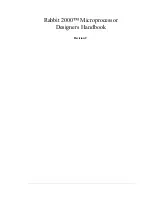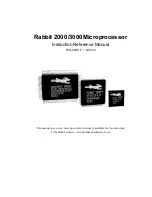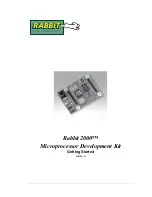
Rev 1.9.1 Feb.09
Proprietary and Confidential
63
In the event of a discrepancy in values between this guide and the Product Specification Document (PSD), the PSD takes precedence.
The
module
uses
the
USB
standard
Suspend
and
Resume
functions
(described
further)
to
control
the
sleep
and
wakeup
states.
For
detailed
specifications
of
Resume
and
Suspend,
refer
to
Universal
Serial
Bus
Specification,
Rev
2.0
.
Suspending
The
module
supports
USB
Suspend
mode.
When
the
module
enters
suspend
mode,
it
shuts
down
the
USB
clock
to
save
power.
While
in
the
suspend
state:
•
The
module
provides
power
to
the
D+/
‐
interface
to
signal
its
current
state
to
the
host
device.
•
The
host
must
maintain
the
VCC_3V3
voltage.
Refer
to
Universal
Serial
Bus
Specification,
Rev
2.0
for
critical
timing
parameters
for
the
suspend
state.
Resume
USB
activity
may
be
resumed
by
either
the
USB
host
or
by
the
module.
If
the
host
initiates
USB
activity:
1.
The
USB
transceiver
detects
the
change
in
bus
activity
and
triggers
the
USB_RESUME
interrupt
to
the
module
ʹ
s
processor.
2.
The
module
then
enables
its
USB
clock
and
responds
to
the
host.
If
the
module
initiates
USB
communication
(Remote
Wakeup):
1.
The
module
enables
its
USB
clock.
2.
The
module
enables
the
USB
transceiver.
3.
The
module
sends
the
resume
signal
for
at
least
20
ms.
Refer
to
Universal
Serial
Bus
Specification,
Rev
2.0
for
critical
timing
parameters
for
the
resume
state.
Host USB driver requirements
The
USB
driver
on
the
host
device
must
meet
these
critical
requirements:
•
The
host
USB
driver
must
support
remote
wakeup,
resume,
and
suspend
operations
as
described
in
Universal
Serial
Bus
Specification,
Rev
2.0
.
•
The
host
USB
driver
must
support
serial
port
emulation.
The
module
implements
both
27.010
multiplexing
and
USB
‐
CDC.
•
When
the
host
doesn’t
have
any
valid
data
to
send,
the
host
USB
driver
should
NOT
send
any
SOF
tokens
(start
‐
of
‐















































